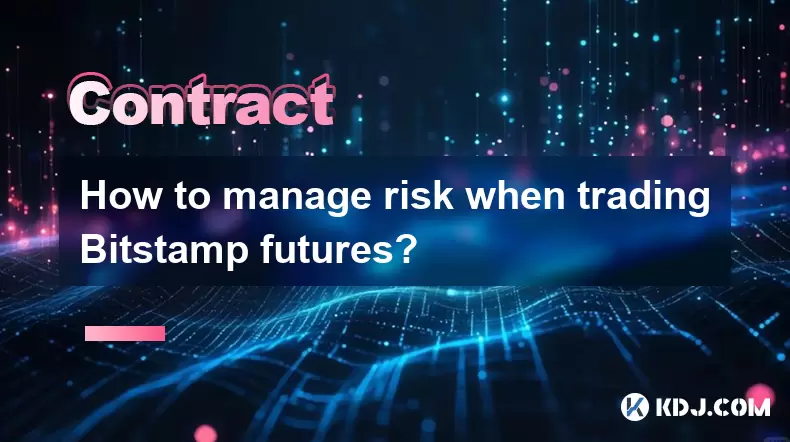-
 Bitcoin
Bitcoin $119000
0.17% -
 Ethereum
Ethereum $3664
-2.12% -
 XRP
XRP $3.229
-7.77% -
 Tether USDt
Tether USDt $1.001
0.02% -
 BNB
BNB $783.2
-1.48% -
 Solana
Solana $191.3
-5.26% -
 USDC
USDC $1.000
0.03% -
 Dogecoin
Dogecoin $0.2450
-7.74% -
 TRON
TRON $0.3115
-1.61% -
 Cardano
Cardano $0.8229
-6.80% -
 Hyperliquid
Hyperliquid $44.17
-2.93% -
 Stellar
Stellar $0.4343
-7.23% -
 Sui
Sui $3.792
-4.09% -
 Chainlink
Chainlink $18.38
-5.73% -
 Hedera
Hedera $0.2491
-7.79% -
 Bitcoin Cash
Bitcoin Cash $518.1
-1.51% -
 Avalanche
Avalanche $24.13
-5.84% -
 Litecoin
Litecoin $113.9
-5.41% -
 UNUS SED LEO
UNUS SED LEO $8.974
-0.21% -
 Shiba Inu
Shiba Inu $0.00001400
-7.98% -
 Toncoin
Toncoin $3.215
-2.09% -
 Ethena USDe
Ethena USDe $1.001
0.03% -
 Polkadot
Polkadot $4.178
-6.84% -
 Uniswap
Uniswap $10.38
-3.05% -
 Monero
Monero $317.8
-1.85% -
 Bitget Token
Bitget Token $4.733
-1.94% -
 Pepe
Pepe $0.00001293
-8.20% -
 Dai
Dai $1.000
0.02% -
 Aave
Aave $292.8
-4.74% -
 Bittensor
Bittensor $430.1
-3.67%
What is a cash and carry arbitrage strategy with crypto futures?
Cash and carry arbitrage in crypto involves buying a cryptocurrency at the spot price while selling its futures contract to profit from price differences.
Jul 17, 2025 at 10:36 am

Understanding the Basics of Arbitrage in Cryptocurrency
Arbitrage is a trading strategy that exploits price differences of an asset across different markets. In the context of cryptocurrency, this means buying a digital asset on one exchange where it's priced lower and simultaneously selling it on another exchange where it's priced higher. The goal is to capture the price discrepancy for risk-free profit.
One specialized form of arbitrage, particularly relevant in crypto derivatives markets, is cash and carry arbitrage. This strategy involves taking positions in both the spot market and the futures market. Traders buy the underlying asset (e.g., Bitcoin or Ethereum) while simultaneously selling the related futures contract. This allows them to lock in a profit based on the difference between the spot price and the futures price.
Important Note:
The success of cash and carry arbitrage hinges on identifying mispricings between the current spot price and the futures price of a cryptocurrency.How Cash and Carry Arbitrage Works with Crypto Futures
In a typical cash and carry arbitrage scenario involving crypto futures, a trader identifies a situation where the price of a futures contract is significantly higher than the spot price of the underlying cryptocurrency. This condition is known as contango. When this occurs, the trader can implement the following steps:
- Buy the physical cryptocurrency at the current spot price.
- Sell the corresponding futures contract at the higher price.
- Hold the position until the futures contract expires.
- Deliver the purchased cryptocurrency to fulfill the futures contract.
The profit comes from the difference between the purchase price of the spot asset and the sale price of the futures contract, minus any carrying costs such as storage, interest, or fees.
Critical Insight:
Carrying costs must be carefully calculated because they directly impact net profitability.Executing a Cash and Carry Trade: Step-by-Step Guide
To execute a cash and carry arbitrage trade in the crypto market, follow these detailed steps:
- Monitor Market Conditions: Use arbitrage tracking tools or manually check futures and spot prices across exchanges.
- Select a Cryptocurrency Pair: Choose a crypto asset with a notable difference between its spot and futures prices.
- Purchase the Spot Asset: Buy the cryptocurrency on a spot exchange at the lower price.
- Sell the Futures Contract: Open a short position on the futures exchange at the higher price.
- Hold Until Expiry: Keep the spot asset in your wallet until the futures contract reaches expiration.
- Fulfill Delivery Obligations: Transfer the asset from your wallet to the futures exchange to settle the contract.
- Realize Profit: The net gain is the difference between the two prices, adjusted for transaction and funding costs.
Key Tip:
Ensure that the futures contract you're using supports physical delivery rather than cash settlement.Risks and Limitations of Cash and Carry Arbitrage
While cash and carry arbitrage may seem like a low-risk opportunity, several factors can erode profits or even lead to losses:
- Liquidity Constraints: If the spot or futures market lacks sufficient liquidity, executing trades at desired prices becomes difficult.
- Exchange Fees: Trading fees, withdrawal fees, and deposit fees can eat into potential gains.
- Timing Delays: Network congestion or slow transaction confirmations can prevent timely execution.
- Volatility: Sudden price swings during the holding period can affect the intended profit margin.
- Regulatory Risks: Regulatory changes may impact futures contracts or impose restrictions on asset transfers.
Essential Consideration:
Always perform a cost-benefit analysis before initiating a cash and carry trade.Tools and Platforms for Implementing Cash and Carry Arbitrage
Successful implementation of a cash and carry arbitrage strategy requires access to reliable platforms and analytical tools:
- Crypto Exchanges: Binance, Bybit, OKX, and BitMEX offer robust futures markets with spot equivalents.
- TradingView: Provides futures and spot price comparisons across multiple exchanges.
- Arbitrage Bots: Tools like HaasOnline and Gunbot automate arbitrage detection and execution.
- Wallets: Secure wallets such as Ledger or Trust Wallet are essential for storing assets during the holding period.
- Data APIs: Using APIs from exchanges allows real-time monitoring of price discrepancies.
Important Feature:
Real-time data integration is crucial for identifying arbitrage opportunities before they disappear.Frequently Asked Questions
Q1: Can cash and carry arbitrage be used with stablecoins?
A1: Yes, but only if there is a significant deviation between the stablecoin’s spot price and its futures price. However, due to their pegged nature, such opportunities are rare and usually very small.
Q2: Is cash and carry arbitrage legal in all jurisdictions?
A2: While arbitrage itself is generally legal, the legality depends on local regulations governing futures trading, cross-border transactions, and taxation policies. Always consult local laws before engaging in such strategies.
Q3: Do I need advanced programming skills to engage in cash and carry arbitrage?
A3: Not necessarily. While algorithmic bots enhance efficiency, manual traders can also execute these strategies by closely monitoring price differences and acting quickly when opportunities arise.
Q4: What happens if the futures contract is cash-settled instead of physically delivered?
A4: In that case, the cash and carry strategy won't work as intended because physical delivery of the asset isn’t required. This limits the ability to lock in a guaranteed profit through delivery.
Disclaimer:info@kdj.com
The information provided is not trading advice. kdj.com does not assume any responsibility for any investments made based on the information provided in this article. Cryptocurrencies are highly volatile and it is highly recommended that you invest with caution after thorough research!
If you believe that the content used on this website infringes your copyright, please contact us immediately (info@kdj.com) and we will delete it promptly.
- XRP, Solana, and Institutional Adoption: A New Era for Crypto?
- 2025-07-24 11:10:12
- Dogecoin, Remittix, and Crypto Protocols: The Evolution of Digital Finance
- 2025-07-24 10:50:12
- BlockDAG, Hedera, and Stellar: Charting the Course for Crypto's Future
- 2025-07-24 10:50:12
- BlockDAG's No-Vesting Edge: Can It Outpace Cardano's Price?
- 2025-07-24 11:10:12
- South Korea's Credit Card Industry Embraces Stablecoin Regulations: A New Era?
- 2025-07-24 10:30:12
- Bitcoin, SHIB, and Institutional Momentum: Decoding Crypto's 2025 Trajectory
- 2025-07-24 11:15:12
Related knowledge

Why is my Bitstamp futures position being liquidated?
Jul 23,2025 at 11:08am
Understanding Futures Liquidation on BitstampFutures trading on Bitstamp involves borrowing funds to open leveraged positions, which amplifies both po...

Does Bitstamp offer inverse contracts?
Jul 23,2025 at 01:28pm
Understanding Inverse Contracts in Cryptocurrency TradingIn the realm of cryptocurrency derivatives, inverse contracts are a specific type of futures ...

How to find your Bitstamp futures trade history?
Jul 23,2025 at 08:07am
Understanding Bitstamp and Futures Trading AvailabilityAs of the current state of Bitstamp’s service offerings, it is critical to clarify that Bitstam...

Can I use a trailing stop on Bitstamp futures?
Jul 23,2025 at 01:42pm
Understanding Trailing Stops in Cryptocurrency TradingA trailing stop is a dynamic type of stop-loss order that adjusts automatically as the price of ...

What are the trading hours for Bitstamp contracts?
Jul 24,2025 at 11:56am
Understanding Bitstamp and Contract Trading AvailabilityBitstamp is one of the longest-standing cryptocurrency exchanges, established in 2011 and head...

How to manage risk when trading Bitstamp futures?
Jul 24,2025 at 12:29pm
Understanding Bitstamp Futures and Their Risk ProfileTrading Bitstamp futures involves entering into contracts to buy or sell a specified amount of cr...

Why is my Bitstamp futures position being liquidated?
Jul 23,2025 at 11:08am
Understanding Futures Liquidation on BitstampFutures trading on Bitstamp involves borrowing funds to open leveraged positions, which amplifies both po...

Does Bitstamp offer inverse contracts?
Jul 23,2025 at 01:28pm
Understanding Inverse Contracts in Cryptocurrency TradingIn the realm of cryptocurrency derivatives, inverse contracts are a specific type of futures ...

How to find your Bitstamp futures trade history?
Jul 23,2025 at 08:07am
Understanding Bitstamp and Futures Trading AvailabilityAs of the current state of Bitstamp’s service offerings, it is critical to clarify that Bitstam...

Can I use a trailing stop on Bitstamp futures?
Jul 23,2025 at 01:42pm
Understanding Trailing Stops in Cryptocurrency TradingA trailing stop is a dynamic type of stop-loss order that adjusts automatically as the price of ...

What are the trading hours for Bitstamp contracts?
Jul 24,2025 at 11:56am
Understanding Bitstamp and Contract Trading AvailabilityBitstamp is one of the longest-standing cryptocurrency exchanges, established in 2011 and head...

How to manage risk when trading Bitstamp futures?
Jul 24,2025 at 12:29pm
Understanding Bitstamp Futures and Their Risk ProfileTrading Bitstamp futures involves entering into contracts to buy or sell a specified amount of cr...
See all articles

























































































